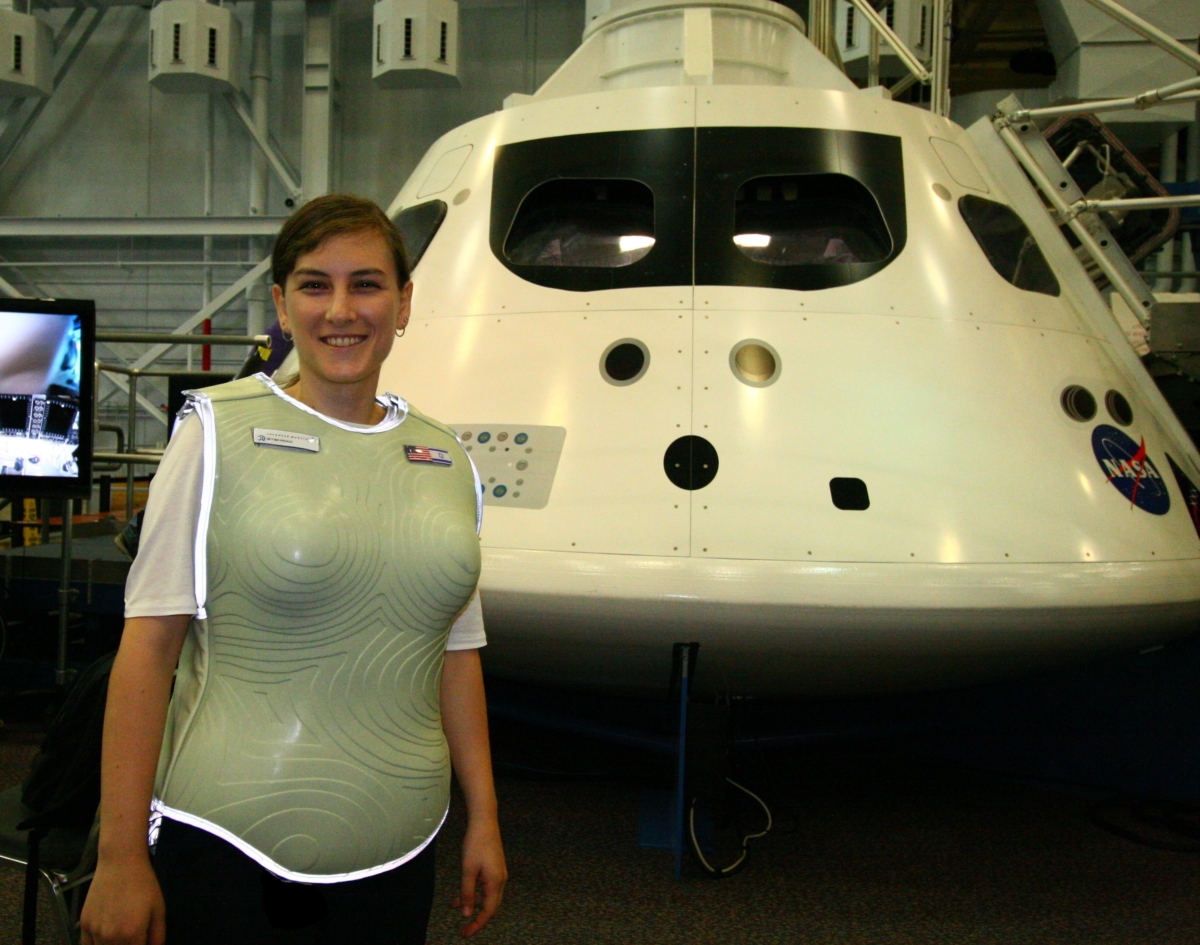
Anti-Radiation Vest to Get Deep-Space Test Next Year

NASA and the Israel Space Agency have signed an agreement to use the AstroRad radiation protection vest on Exploration Mission-1 (EM-1), the uncrewed first flight of NASA's powerful new Space Launch System (SLS) rocket.
AstroRad is the second product developed by the American-Israeli company StemRad, after StemRad 360 Gamma — the world’s first wearable shield that provides meaningful protection from harmful gamma radiation.
Tel Aviv-based StemRad collaborated with NASA’s prime contractor for the Orion crew-carrying spacecraft, Lockheed Martin, to adapt its technology for use in space. On EM-1, which is currently scheduled to launch in late 2019, Orion will launch atop SLS, kicking off a three-week mission that will take the capsule beyond the moon.
The threat of radiation exposure is high on such deep-space journeys, posing potentially significant dangers to crewmembers.
That's where AstroRad comes in. During the EM-1 test, Orion will carry two test dummies, each of which contains thousands of radiation detectors. One dummy will be naked and the other will wear an Astrorad vest. (These dummies will be supplied by the German Aerospace Center.)
While Orion is unlikely to encounter a powerful solar storm during the relatively brief EM-1 mission, the spacecraft will pass through the Van Allen radiation belts, zones of energetic charged particles that emanate from solar winds. So AstroRad will get a trial in high-radiation conditions, project team members said.
If the test is successful, AstroRad will be used on crewed missions to deep space. Additionally, the vest is expected to be used aboard the International Space Station beginning in 2019 for advanced ergonomic studies in microgravity.
Get the Space.com Newsletter
Breaking space news, the latest updates on rocket launches, skywatching events and more!
For more information on StemRad, go to www.stemrad.com.
Leonard David is author of "Mars: Our Future on the Red Planet," published by National Geographic. The book is a companion to the National Geographic Channel series "Mars." A longtime writer for Space.com, David has been reporting on the space industry for more than five decades. Follow us @Spacedotcom, Facebook or Google+. This version of the story published on Space.com.
Join our Space Forums to keep talking space on the latest missions, night sky and more! And if you have a news tip, correction or comment, let us know at: community@space.com.

Leonard David is an award-winning space journalist who has been reporting on space activities for more than 50 years. Currently writing as Space.com's Space Insider Columnist among his other projects, Leonard has authored numerous books on space exploration, Mars missions and more, with his latest being "Moon Rush: The New Space Race" published in 2019 by National Geographic. He also wrote "Mars: Our Future on the Red Planet" released in 2016 by National Geographic. Leonard has served as a correspondent for SpaceNews, Scientific American and Aerospace America for the AIAA. He has received many awards, including the first Ordway Award for Sustained Excellence in Spaceflight History in 2015 at the AAS Wernher von Braun Memorial Symposium. You can find out Leonard's latest project at his website and on Twitter.









